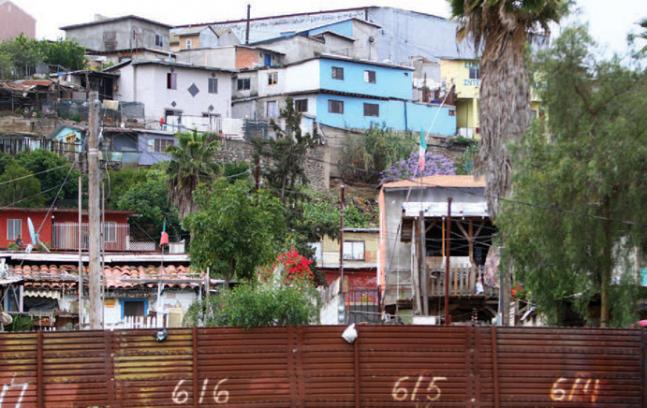La Frontera

Mexican writers living in Tijuana, says Miguel Pillado, have a different identity from Mexican-American writers living across the border in California. (Photo by Bill Wechter/Stringer)
The San Diego/Tijuana border is known as one of the busiest crossings in the world. Many have declared it to be a quintessential illustration of sociocultural hybridity. Yet, it is also said to have a great disparity of income between one side and the other. These observations and the ways that the border is represented by Mexican authors who challenge the stereotypes placed upon this region of the world are the focus of research by Miguel A. Pillado.
Pillado, assistant professor of Spanish in the department of modern languages and literatures, analyzes the work of four writers from Tijuana, how they represent the city and how their discourse about border identity differs from Mexican-American writers.
The author of the upcoming book La Ciudad de Una y Mil Caras, (The City of a Thousand and One Faces), Pillado examines the works of four authors he terms fronterizo writers—Federico Campbell, Luis Humberto Crosthwhite, Rosina Conde and Heriberto Yépez. Each writer brings to his or her work a different view of life in Tijuana and a unique perspective of its cultural and social panorama, he says. Each creates a literary piece that shows the city from a different perspective. Yet, together they demonstrate that Tijuana has problems such as social and economic inequality, issues that can be translated to any other large city in the world.
"We're talking about images being produced, both in Mexico and the United States, of Tijuana as a city of vice or Tijuana as a city of transit, where migrants pass to get to the United States," he says. "There is a more recent metaphor to talk about this city, and that is to talk about Tijuana as a cultural hybrid entity, an emblem of the postmodern world.
"[The writers] portray life in the community, yet they also create this identity of life on the border. And this identity they have as Mexicans living in Tijuana is very different to Mexican-American writers living just across the border. The border identity created by Mexican-Americans has become a hegemonic metaphor, but we need to take into account what is being said on the Mexican side of the border."
Story by Robert Nichols
Posted on:

